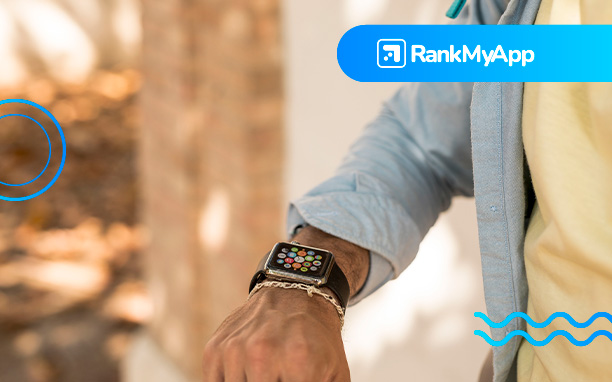The fact that apps make our daily lives easier is a fact, but imagine if they could be used on watches or other accessories, eliminating the need for smartphones? Well, that’s already a reality thanks to wearables.
Wearables are digital accessories in which you can use the features of applications that, until now, could only be used on smartphones and other mobile devices. These gadgets are designed to be worn on the body, often to track physical activity, health data or to facilitate access to information.
But what are these devices, how do they work and why are they becoming such a strong trend in the market?
What is a wearable anyway?
Have you ever thought how practical it would be to be able to monitor your heart rate during a run and check your messages on the same device? Well, that’s possible with the help of smartphones. But what if you could use these functions on an even easier-to-carry object, such as a watch or ring?
Wearables technology refers to electronic devices that can be used as accessories or integrated into clothing. The main distinguishing feature of these devices is their ability to connect to the internet and synchronize with other devices, such as smartphones and tablets, allowing data to be monitored in real time.
In 2024, Wearables devices gained even more popularity due to their increasing accuracy in monitoring health data. New sensors allow continuous measurement of vital signs such as blood oxygen levels, heart rates and even early detection of arrhythmias. These advances have increased interest not only among ordinary consumers, but also among healthcare professionals.
How does the wearable work?
But how does the wearable work? It can work both in sync with your smartphone and independently. So, with a wireless connection, you’ll receive the main notifications from apps that work online on your smartwatch. In other cases, such as notifications of incoming and missed calls, you don’t need internet access.
In addition, they work via sensors that capture information from the user’s body and transmit this data to an application or platform. These sensors are capable of monitoring data such as heart rate, calories burned, sleep quality and even stress levels.

Recently, wearables have begun to incorporate artificial intelligence (AI) and machine learning algorithms, allowing the devices to offer more detailed and personalized insights based on the data collected. This technological evolution allows, for example, a smartwatch to suggest lifestyle adjustments based on the wearer’s health history.
Other interesting – and practical! – of wearables are music playback, GPS, weather forecasting, calendar reminders and much more.
Main categories of wearables
1. Smartwatches
These devices are one of the most popular examples of wearable technology. They are worn on the wrist and can perform a variety of functions, such as monitoring health, receiving notifications, and even making phone calls.
2. Fitness trackers
Similar to smartwatches, these devices are more focused on monitoring physical activity, tracking steps, calories burned, distance traveled, etc.
3. Smart glasses
These glasses have the ability to superimpose digital information onto the user’s field of vision. Companies such as Google and Meta are leading the development of augmented reality glasses, with the aim of facilitating navigation, communication and access to information.
The use of smart glasses is growing significantly, with the potential to replace smartphones in the future. In September 2024, Meta presented its first augmented reality (AR) glasses during the Connect conference, highlighting the progress of this segment.
Market trends and forecasts for wearables
The wearables market continues to expand. New models and functionalities emerge every year, attracting both consumers and investors. The trend is for these devices to continue to integrate even more efficiently with other technologies, such as smartphones, computers and even household appliances.
According to IDC forecasts, the Wearables market is expected to grow by 6.1% in 2024, totaling more than 537 million units shipped globally. This is partly due to the expansion of health functionalities and the growing awareness of the importance of constantly monitoring vital signs.
Challenges of the wearable trend
Although wearable technology is growing, there are still challenges, such as the need for longer battery life, better usability and security of user data. In addition, integration with other devices and operating systems must become increasingly fluid.
On the other hand, the opportunities are vast. Continuous health monitoring and increased augmented reality capabilities pave the way for wearables to become an essential part of everyday life. And with the support of tech giants such as Apple, Google and Meta, the future promises to be innovative.
With the ability to monitor health, facilitate access to information and connect to other devices, wearables have the potential to revolutionize the way we live and interact with technology. Every year, new advances are made, and the trend is for these devices to become even more popular in the coming years.
In 2024, the outlook for wearables is extremely positive, with continued advances in health monitoring, artificial intelligence and augmented reality. For consumers and companies, this is a trend to watch closely.
Receive more content like this
Did you like learning more about wearables and how they can make your routine even easier? If you want to read more content like this, be sure to subscribe to our newsletter. Receive our publications in your e-mail first hand and always stay informed about the technological universe!





